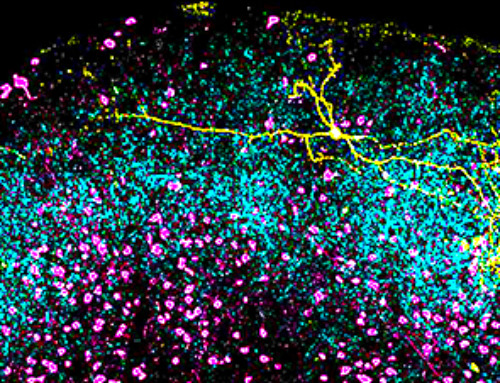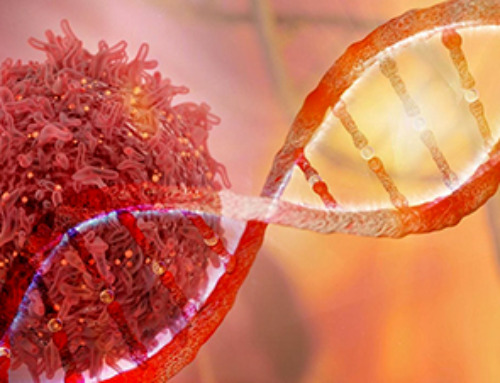- Looking to the past eradication of diseases, a new paper argues that the global eradication of COVID-19 is possible.
- The paper quantifies the factors affecting eradicability and scores a few diseases accordingly.
- The authors of the paper hope and believe that the international disruption that COVID-19 has caused may drive the world’s governments toward a global solution.
As wealthier nations struggle to get more people to undergo vaccination, lower income nations struggle to acquire sufficient vaccine doses, and new SARS-CoV-2 variants emerge, a newly published paper states that the global eradication of COVID-19 remains possible nonetheless.
Lead author of the paper, Dr. Nick Wilson of the University of Otago in Wellington, New Zealand, pointed out to Medical News Today that skepticism regarding the paper’s conclusion is not surprising:
“[The] reaction is completely understandable at the current point in time, [but] when the plans to eradicate smallpox were announced, and there were still millions of cases globally per year, many people were also very skeptical.”
The paper cites the globally felt disruption resulting from COVID-19 as presenting an opportunity for a concerted international effort. Critical to an eradication program’s success is establishing strong vaccine coverage and staying ahead of rapidly developing variants.
The paper — entitled, “We should not dismiss the possibility of eradicating COVID-19: Comparisons with smallpox and polio” — appears in BMJ Global Health.
The metrics of optimism
The authors of the paper define eradications as the “permanent reduction to zero of the worldwide incidence of infection caused by a specific agent as a result of deliberate efforts; intervention measures are no longer needed.”
The paper presents a preliminary assessment of the eradicability of COVID-19 by comparing it with other worldwide diseases, including smallpox, which has been eradicated, and polio, for which just one of three serotypes persists.
Based on an established scoring system and additional technical, sociopolitical, and economic factors that the authors included, the study compiled a total of 17 variables relating to vaccine-preventable diseases, with a three-point relative scale for each variable. Each of the diseases received a score according to these metrics, with higher values indicating a greater chance of eradication.
COVID-19 scored as being slightly more eradicable than polio.
Smallpox was most eradicable with a score of 2.7. In comparison, COVID-19 scored 1.6, and polio scored 1.5.
Medical challenges
Dr. Robert Kim-Farley, MPH, of the University of California, Los Angeles’s Fielding School of Public Health — who was not involved in writing the article — told MNT: “The single greatest obstacle to true eradication will be achieving and sustaining the very high vaccination coverage (using a vaccine with no or extremely low infection breakthrough) needed to achieve full herd immunity, whereby transmission of COVID-19 in a community ceases.”
Although he is not giving up on achieving higher vaccination coverage through more robust international public health and social measures, Dr. Wilson said that herd immunity is not a requirement for eradication.
“Smallpox was eradicated without achieving herd immunity,” said Dr. Wilson, “but rather by targeted vaccination approaches. It is also notable that countries have also eliminated measles without (quite) achieving herd immunity, and, in fact, the whole of the Americas eliminated measles for a time.”
The paper notes that there is also a “risk of the persistence of the pandemic virus in non-human animal reservoirs,” a phenomenon that is occurring with COVID-19 in the U.S. and elsewhere.
Asked whether current animal reservoirs may doom an eradication effort, Dr. Wilson said we are not there yet.
“If we had the situation of influenza viruses (widespread in wild birds) then obviously eradication would not be feasible,” he noted.
He added that “it is possible to eradicate diseases in some wild animals — for example, eliminating rabies in wild foxes via aerial bait drops containing vaccine (as per Western Europe).”
Dr. Kim-Farley cited what he sees as the three most significant obstacles to eradication success.
Current vaccines, noted Dr. Kim-Farley, “although offering excellent protection against severe illness and death, still have some breakthrough infections that can infect others.”
Identifying cases of often-asymptomatic COVID-19 is also harder, said Dr. Kim-Farley, than it is with smallpox and measles, which “are usually always symptomatic and identifiable.”
Finally, there is “the lack of political will to apply (and the unwillingness of some persons to accept) the strict public health measures, such as required vaccination, required mask wearing, required quarantine and isolation, and required testing.”
News
Lipid nanoparticles discovered that can deliver mRNA directly into heart muscle cells
Cardiovascular disease continues to be the leading cause of death worldwide. But advances in heart-failure therapeutics have stalled, largely due to the difficulty of delivering treatments at the cellular level. Now, a UC Berkeley-led [...]
The basic mechanisms of visual attention emerged over 500 million years ago, study suggests
The brain does not need its sophisticated cortex to interpret the visual world. A new study published in PLOS Biology demonstrates that a much older structure, the superior colliculus, contains the necessary circuitry to perform the [...]
AI Is Overheating. This New Technology Could Be the Fix
Engineers have developed a passive evaporative cooling membrane that dramatically improves heat removal for electronics and data centers Engineers at the University of California San Diego have created an innovative cooling system designed to greatly enhance [...]
New nanomedicine wipes out leukemia in animal study
In a promising advance for cancer treatment, Northwestern University scientists have re-engineered the molecular structure of a common chemotherapy drug, making it dramatically more soluble and effective and less toxic. In the new study, [...]
Mystery Solved: Scientists Find Cause for Unexplained, Deadly Diseases
A study reveals that a protein called RPA is essential for maintaining chromosome stability by stimulating telomerase. New findings from the University of Wisconsin-Madison suggest that problems with a key protein that helps preserve chromosome stability [...]
Nanotech Blocks Infection and Speed Up Chronic Wound Recovery
A new nanotech-based formulation using quercetin and omega-3 fatty acids shows promise in halting bacterial biofilms and boosting skin cell repair. Scientists have developed a nanotechnology-based treatment to fight bacterial biofilms in wound infections. The [...]
Researchers propose five key questions for effective adoption of AI in clinical practice
While Artificial Intelligence (AI) can be a powerful tool that physicians can use to help diagnose their patients and has great potential to improve accuracy, efficiency and patient safety, it has its drawbacks. It [...]
Advancements and clinical translation of intelligent nanodrugs for breast cancer treatment
A comprehensive review in "Biofunct. Mater." meticulously details the most recent advancements and clinical translation of intelligent nanodrugs for breast cancer treatment. This paper presents an exhaustive overview of subtype-specific nanostrategies, the clinical benefits [...]
It’s Not “All in Your Head”: Scientists Develop Revolutionary Blood Test for Chronic Fatigue Syndrome
A 96% accurate blood test for ME/CFS could transform diagnosis and pave the way for future long COVID detection. Researchers from the University of East Anglia and Oxford Biodynamics have created a highly accurate [...]
How Far Can the Body Go? Scientists Find the Ultimate Limit of Human Endurance
Even the most elite endurance athletes can’t outrun biology. A new study finds that humans hit a metabolic ceiling at about 2.5 times their resting energy burn. When ultra-runners take on races that last [...]
World’s Rivers “Overdosing” on Human Antibiotics, Study Finds
Researchers estimate that approximately 8,500 tons of antibiotics enter river systems each year after passing through the human body and wastewater treatment processes. Rivers spanning millions of kilometers across the globe are contaminated with [...]
Yale Scientists Solve a Century-Old Brain Wave Mystery
Yale scientists traced gamma brain waves to thalamus-cortex interactions. The discovery could reveal how brain rhythms shape perception and disease. For more than a century, scientists have observed rhythmic waves of synchronized neuronal activity [...]
Can introducing peanuts early prevent allergies? Real-world data confirms it helps
New evidence from a large U.S. primary care network shows that early peanut introduction, endorsed in 2015 and 2017 guidelines, was followed by a marked decline in clinician-diagnosed peanut and overall food allergies among [...]
Nanoparticle blueprints reveal path to smarter medicines
Lipid nanoparticles (LNPs) are the delivery vehicles of modern medicine, carrying cancer drugs, gene therapies and vaccines into cells. Until recently, many scientists assumed that all LNPs followed more or less the same blueprint, [...]
How nanomedicine and AI are teaming up to tackle neurodegenerative diseases
When I first realized the scale of the challenge posed by neurodegenerative diseases, such as Alzheimer's, Parkinson's disease and amyotrophic lateral sclerosis (ALS), I felt simultaneously humbled and motivated. These disorders are not caused [...]
Self-Organizing Light Could Transform Computing and Communications
USC engineers have demonstrated a new kind of optical device that lets light organize its own route using the principles of thermodynamics. Instead of relying on switches or digital control, the light finds its own [...]





















